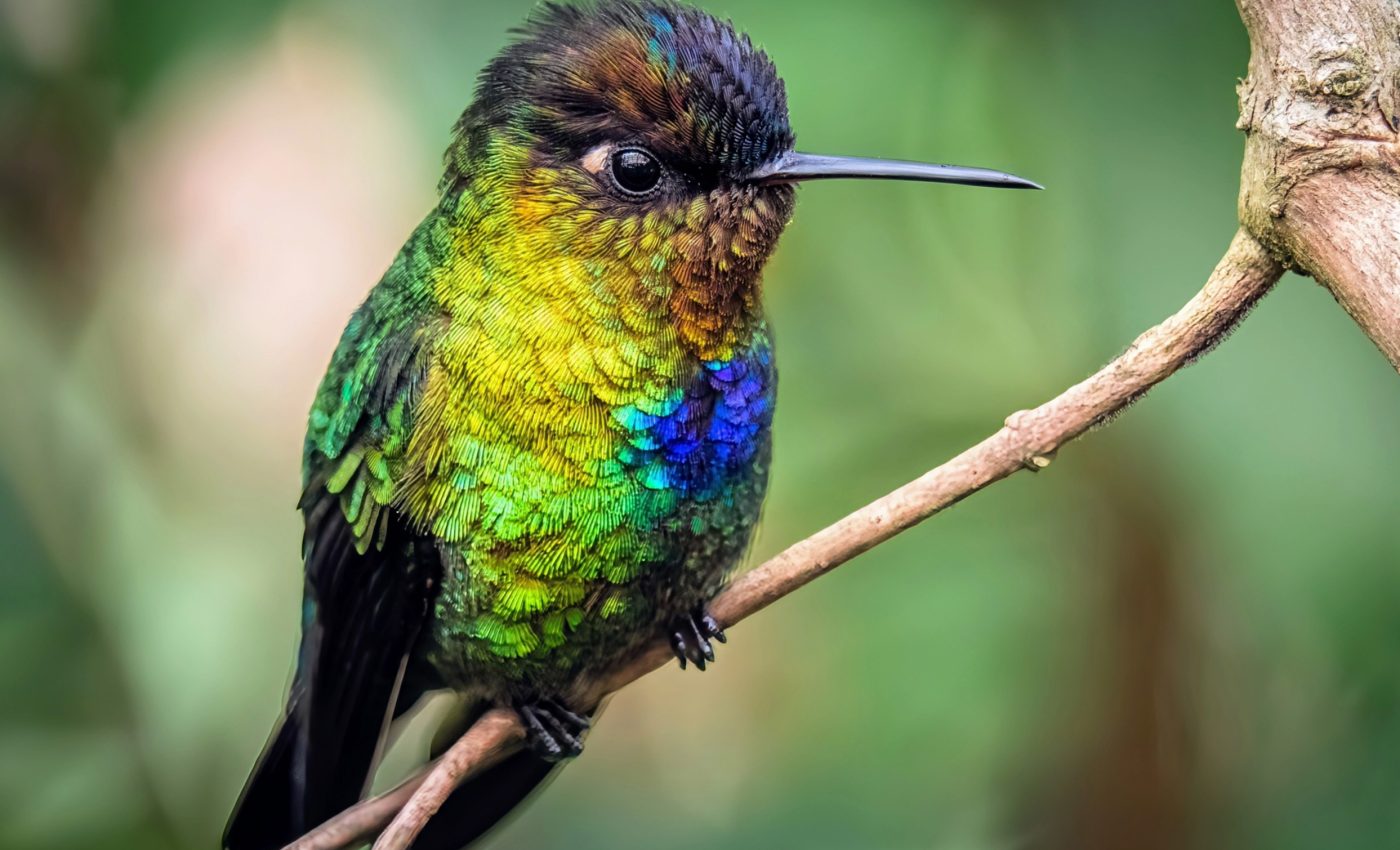
Hundreds of bird species face extinction risks in the Neotropics
The Neotropics is one of Earth’s richest vessels of biodiversity. It contains a colorful and diverse array of bird species and is home to around 30% of all bird species worldwide.
Despite the ecological complexity and biodiversity of the region, climate change poses a severe threat to bird diversity in the coming decades.
Unsettling forecast for birds
Jeff Brawn, co-lead author of a recent study on birds of the Neotropics, is a professor emeritus in the Department of Natural Resources and Environmental Sciences at the University of Illinois Urbana-Champaign.
“Compared to a more optimistic future precipitation scenario, we predict the ‘business-as-usual’ scenario will be potentially catastrophic for resident forest birds in the Neotropics,” said Brawn, noting that birds are just one part of a larger picture.
“We’re just using birds as an illustration. We will likely see similar threats for mammals, reptiles, amphibians, arthropods, fungi, and plants. And the implications for agriculture are not insignificant either.”
Climate scenarios for the Neotropics
Brawn’s team, including Professor David Luther from George Mason University (GMU) and Rong Fu from UCLA, predicted precipitation changes under two climate scenarios in the Neotropics by 2100.
The business-as-usual scenario, known as SSP-8.5, paints a grim future where greenhouse gas emissions continue unabated.
On the other hand, the SSP-2.6 scenario represents an optimistic view where aggressive climate action leads to the transition to a low-carbon economy.
Bird ranges and climate challenges
The team investigated how bird ranges overlap with climate issues by mapping predicted changes in dry season lengths across the Neotropics and overlaying the distribution of 3,000 forest bird species.
“We were able to say where the dry season is going to get longer or shorter, and to what extent, and how many species currently living in those places will be affected,” explained Luther.
The SSP-8.5 scenario is discouraging. It projects that dry seasons will be extended by at least 5% across three-quarters of Neotropical lowland forests, impacting 2,000 species of resident birds.
By contrast, only 90 bird species face longer dry seasons in the SSP-2.6 scenario, where just 10% of lowland forests become drier.
Longer dry seasons in the Neotropics
Longer dry seasons due to climate change could have far-reaching implications for tropical ecosystems and bird species distributions.
“Think of a closed canopy rainforest. If it gets too dry, there’s going to be a threshold where it’ll open up and become a savannah,” Brawn said.
For Luther, the maps highlight areas of relative stability. “If we’re going to plan future conservation efforts, we should put extra effort into those areas because they’re less likely to dry out.”
Climate change and deforestation
Despite the unsettling findings on the loss of bird diversity and ecosystems, the team believes the study paints a “rosy picture” as it doesn’t account for the impact of deforestation from climate change. Therefore, the reality of the situation is even more critical.
“If there’s fewer trees, it’s hotter and drier,” Brawn said. “Unfortunately, thousands of hectares of tropical forest disappear every year.”
The researchers hope these alarming insights expedite policy action. However, climate policy is just one piece of a larger puzzle.
The good news? “These are all things we can solve, if we choose to. We can do the right thing,” Luther said.
Saving birds in the Neotropics
The complex challenges facing the Neotropics demand a concerted and multi-disciplinary approach.
Researchers, conservationists, policymakers, and local communities must collaborate to implement sustainable solutions. Integrated strategies that combine scientific research with traditional ecological knowledge provide the most effective avenues for positive change.
Efforts to preserve biodiversity must consider the socioeconomic realities of the region, ensuring economically viable and culturally inclusive conservation initiatives.
Technological innovations
Technological advancements play a role in addressing environmental and climate challenges. Remote sensing and geographic information system (GIS) technologies enable more precise monitoring of ecosystem changes and effective conservation planning.
Moreover, advancements in renewable energy and sustainable agricultural practices offer opportunities to mitigate the impact of climate change.
Brawn and his colleagues advocate for harnessing these technologies. They argue adopting innovative tools empowers communities and helps safeguard the Neotropics biodiversity.
Humanity stands at the crossroads of a monumental decision. Will it transition towards a world of mitigated carbon emission and preserve the ecology of places like the Neotropics or continue on a path of unbridled climate change, risking thousands of bird species?
The study is published in the journal Global Change Biology.
—–
Like what you read? Subscribe to our newsletter for engaging articles, exclusive content, and the latest updates.
Check us out on EarthSnap, a free app brought to you by Eric Ralls and Earth.com.
—–













